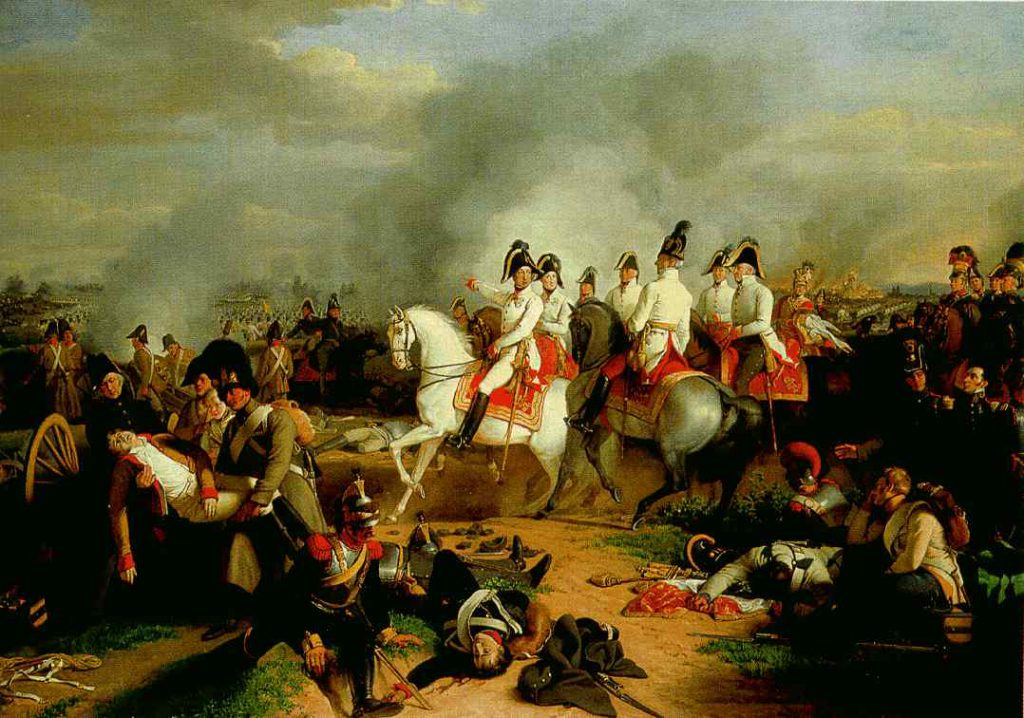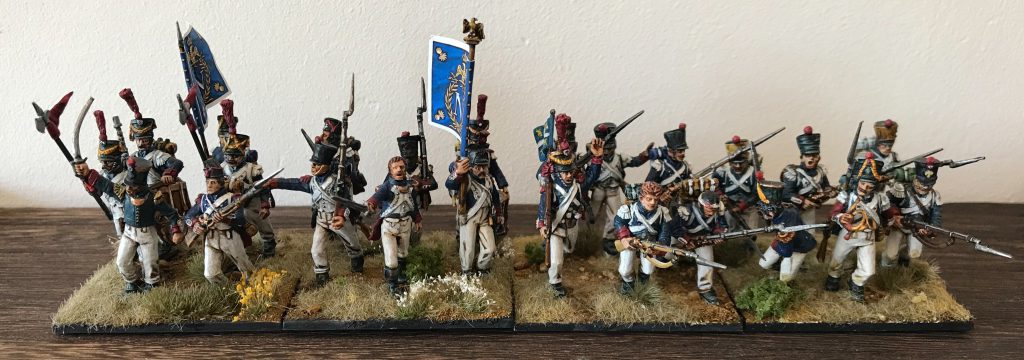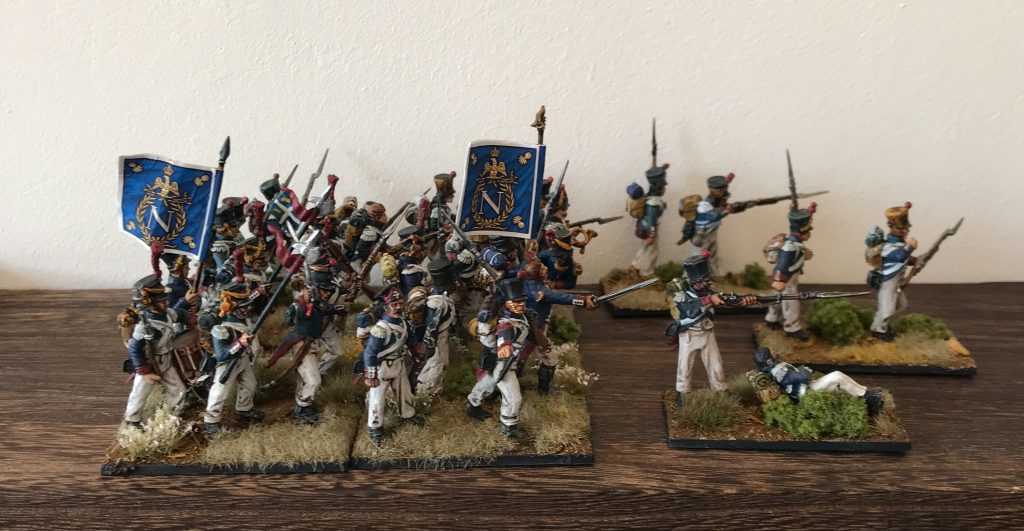Two weeks ago the Goonhammer Historicals team got our hands on Soldiers of Napoleon, a new mass battle Napoleonic ruleset from Artorus Games – you can check out the review here. This review was based on a preview copy provided for us by Gripping Beast. We had a lot of comments and questions about this ruleset, and I reached out to designer Warwick Kinrade to have a chat about his newest game before a few tips to get you started with the game.
Hi Warwick! For a lot of us you’re a man who needs no intro, but for everyone else – who are you and how did you get into game design?
Hi. I’m Warwick Kinrade. I have always been ‘into’ designing games and rules, since getting into gaming around age 10. I started out writing my own roleplaying games and
adventures. I first did it as a job after joining GW in 1996.
What challenges and interests you about designing for the tabletop?
I enjoy trying to bring strong period character into the rules, to make the game both look and feel like the historical period it is trying to recreate. First, you need a know a bit what it is you’re trying to recreate, and I also enjoy that research aspect, the bit before you start writing. Narrative is big for me, I like my games to tell a clear story, an attack repulsed here, a heroic moment there, to and fro… like the history of actual battles you read. They all have a bit of drama and tension, which many rules lack I feel.
You’re a veteran in games design, have you seen any changes over your time in the industry?
Games design has changed, if slowly. Historical wargamers are a fairly conservative and tradition bunch, there isn’t that much innovation, but games designed today tend to aim for a bit more ‘fast-play’ than the old school rules I started with. Production values have got far better. There is definitely a trend towards smaller scale ‘skirmish game’ with lower entry bar for players in models. Back in the day, it was all battles. Computer games have had a influence too. I don’t play many computer games (huge time thief). I decided long ago that tabletop games and miniatures were my interest and passion, and that to do it (well), I couldn’t spend hours on Call of Duty instead of painting toy soldiers. You never get painted armies that way. I don’t enjoy modern computer games, all sound and fury….no thinking time. I like thinking and planning time.
What prompted you to write a Napoleonics rule set?
Napoleonics was where I started my tabletop wargaming, in about 1981, with Airfix toy soldiers. I have always enjoyed it and read books about the battles and campaigns. It wasn’t a big leap, I always knew I’d do my set of rules for the period one day, now is that time. I was asked by a gaming friend who has played Napoleonics since the 70s, unhappy with the all the available rules, to make a card driven game for it. He loves Soldiers of God and Soldiers of Rome, and asked if I could do something similar for his large Napoleonics collections. I said yes. In wargaming it really helps to have large wars to fight. Lots of nations, lots of troops, lots of battles, a big subject. Napoleonics has it.

How deep do you get into research before designing? Has there been anything on the Napoleonic period you’d recommend?
I do a lot of reading, but then I enjoy it and I make notes if anything occurs to me whilst reading… or you just forget. For a detailed look at Napoleonic warfare and one battle, Mark Atkin’s the Waterloo Companion is priceless. I wish there were similar books for other battles, I’d get them all.
What stands out from the pack about Soldiers of Napoleon?
The action cards are the obvious answer. It has many neat (I’d like to think!) mechanics: the skirmishing fire system, the reserve brigade system, the way armies are selected, battlefield objectives system, etc. I think it all makes for a fun, playable, testing game that feels like a Napoleonic battle and looks great on the tabletop. A game that is easy to play, but tricky to play well. Easy to learn, hard to master is always good.
The grogsphere always rumbles about card activations – what’s the benefit of card activations?
Those who grumble are wrong, so wrong. Card activation makes a game, it quickly recreates the fog of war and command friction in a simple, intuitive way, by what cards you have in hand and how you can use them. You literally have to do the best you can with the cards you are dealt. It takes away a lot of that ‘god’s eye view’ and instant command and control that is too easy and not how battles are actually fought. Fundamentally, it takes away control and puts chaos, but controllable chaos, into the heart of the game. The cards are unpredictable (just like dice, but not wildly random). I love that… I hate predictable games with set turns systems and movement distances etc. now. It’s too easy to read what will happen.
But people still complain about cards being “game-y”, right?
Those that complain about cards either have haven’t played that much, have a bad experience from someplace where the cards overly dominated or just feel they need and/or enjoy the control in the game, I think. Players want different things out of their games. One system isn’t going to suit all. Friction is just making it harder to do what you want to do as a commander. It’s the invisible obstacle. In the chaotic and fluid dynamics of a battle, you need it, otherwise you have chess… no randomness, all predictable, everything just as you want and only the opponent to overcome, all on you. Zero friction. Some like that, I don’t. I’m not a big chess fan.
What innovations would you love to see in Historicals?
From board gaming, there is loads of interesting mechanics using dice, or dice pools, I think something like that could work well for tabletop gaming. It did for SAGA!
What’re you playing at the moment?
I play Soldiers of Napoleon mostly, with WW2 Battlegroup (and my other rules). I have collected and painted a large Austrian army over the past 2-3 years, so mostly, I play them*. Mostly I write games so I can play them. I have started work on a sci-fi skirmish set of rules, very low-level stuff (more like a western gunfight really). I’m in a Bloodbowl League. One of my current projects is to try and get back into roleplaying games, been a long time, but I grew-up playing D&D, MERP and Call of Cthulthu… I want to do it again.
*Warwick’s army features heavily in Soldiers of Napoleon, and it’s great to see the author’s minis illustrating the rules!
Thanks Warwick! You can read more of Warwick’s thoughts on Soldiers of Napoleon – including play examples and loads of his thoughts on games design on his Blog, Move to Contact.
Following Up
If you’ve read our coverage of Soldiers of Napoleon, and you’d like to get into it there’s a couple of things to think about to get started.
First off – like all wargames! – you’ll need to think about Scale. Soldiers is a “divisional” scale game, so you’re working with battalions, brigades and regiments. A “unit” would represent a Battalion, and you’re looking at 2+ battalions within a larger formation (“regiment”), that share a command stand. Several regiments make up your army. In reality, that could have been somewhere between 4 and 10,000 soldiers, so the game is open to many different scales of play. Examples of play are illustrated with 28mm models throughout the book, but I think the rules lend themselves well to smaller scales between 28 and 6mm. Smaller scales would give you a real mass of models, larger units (see “bases” below), and the potential for mass movements of reserves, vanguard brigades and support pieces. The mechanics of Soldiers are scale-agnostic, with all measurements recorded in “paces” rather than a set centimeter, inch or millimeter distance. As a result, change what a pace corresponds to and you can switch between scales easily. The rulebook contains a handy table to get this sorted, where 28mm models use 1 pace = 1 inch, and ~15mm uses 1 pace = 1cm.

Size of battle is another key consideration. This is most definitely a mass battle game – as Warwick says above, “lots of nations, lots of battles” that works in the grand scale of major Napoleonic conflicts. It will certainly play at smaller sizes of battle, but to get the most out of the system I think you’re looking to aim for 5-6 units at minimum, with 2 units in each regiment and some horse and guns to spare. At 28mm scale, that could be around 100, depending on how you’ve based them. As the rules do distinguish between different types of cavalry and infantry roles, a larger battle is also going to give you some unit and rules variety. If you’ve been reading along with my Road to Austerlitz series, the size of my Imperial Guard Army would give me a fantastic battle – multiple infantry blocks of different types with cavalry support (and some extras on the way).

Your units in Soldiers of Napoleon are arranged by multi-model bases, and basing is an important consideration for the game. Bases act as the fundamental building block of the unit – you attack, move, take hits and remove by base. Bases also give a visual indicator of formation and unit readiness, with order/disorder shown very simply with neatly or disrupted base formations. Units with many bases are more powerful, more difficult to manoeuvre and offer more staying power, than smaller based units of the same type. That means you’ll want to think about how you’re going to base your men, and what you want each unit to look on the field. With your multibases, you’ll also want either individual or paired bases to act as skirmishers – a couple of generic (or if you’re fancy, voltiguers/flank company/rifles) skirmishing models per regiment will do you fine.


It does also mean you need to have a chat with opponents before games. If you’re working with regular opponents, a gaming club or just making two armies (look at you go!), deciding on a shared basing scheme would be a good move. I have my Guard based on 50x50mm square bases, with six men to a base and 4 of these bases as one unit (28 men). Working out how that corresponds to an opponent with 4 men on a 40x40mm base and therefore 6 bases in the same size of unit does require a conversation if you’re going to keep things visually simple by using the bases as-is, without any additional bookkeeping.

Once you’ve thought about all that, dive in! If you’re an experienced Napoleonic grognard, you’re very probably there already, and can summon up your men from their bivouacs, sound the drum and strike up the regimental band and get playing Soldiers of Napoleon as soon as it arrives on your doorstep. For those who’re wanting to scratch that mass battle itch by scaling up from perennial Goonhammer favourite Sharp Practice, or take a step into more tactical and strategic complexity from Black Powder, get thinking, building and painting and give it a go!
Have any questions or feedback? Drop us a note in the comments below or email us at contact@goonhammer.com


